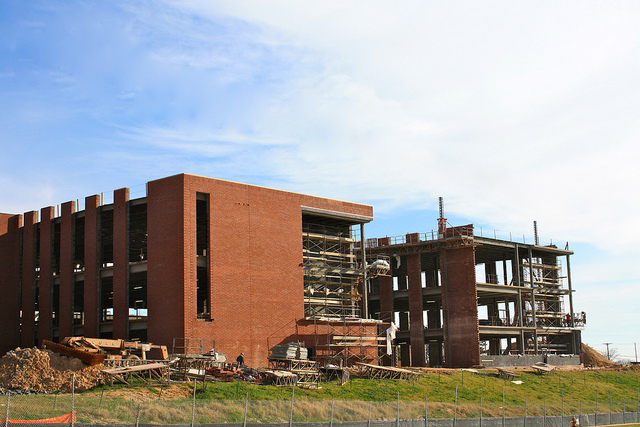By Diane Rey
For Maryland Reporter
Time is ticking down on the largest school construction bill in Maryland history.
With just five days until the end of the General Assembly session April 8, the Senate has yet to pass HB727, dubbed the Build to Learn Act, which would provide an additional $2.2 billion for school construction, divvying up the bulk of the funding to the state’s largest counties.
The bill was heavily amended by the House Appropriations Committee and passed the full House by a vote of 133-3 on March 18.
Appropriations Committee Chair Maggie McIntosh, D-Baltimore City, told senators on the Budget and Taxation Committee at a hearing last week that school construction funding has fallen short for counties targeted in the bill.
“Even with our $500 million that we’ve included in our (FY2020) budget, we will fall $195 million short of meeting the needs of our counties in school construction this year,” McIntosh said.
She said while the while the Interagency Commission on School Construction program that
decides what projects will be funded is “great,” counties targeted in the bill still fall short.
“It does not meet the need of large counties, growing counties, or counties that have older buildings that have vast needs for renovation,” she said.
Del. Kathleen Dumais, D-Montgomery, is the lead sponsor, and the bill remains in the Senate committee. Sen. Craig Zucker, D-Montgomery, is the lead sponsor of the cross-filed bill, SB731, which has also had a committee hearing.
According to an e-newsletter distributed by the Maryland Association of Counties, school construction legislation introduced by Gov. Larry Hogan and the original form of HB727 “were broad-based programs available to all counties based on a project-by-project review.”
Large counties get biggest share
However, the amended bill provides percentage distributions of the new funding to the state’s seven largest jurisdictions, reserving the remaining 7.9% for projects in the other 17 counties.
The funding percentages are as follows (with bond sale proceeds in millions):
ANNE ARUNDEL COUNTY – 11.4% ($250)
BALTIMORE CITY – 18.2% ($400)
BALTIMORE COUNTY – 18.2% ($400.)
FREDERICK COUNTY – 3.4% ($74)
HOWARD COUNTY – 4.5% ($99)
MONTGOMERY COUNTY – 18.2% ($400)
PRINCE GEORGE’S COUNTY – 18.2% ($400, only if the county does not enter into a public-private partnership agreement)
ALL OTHER COUNTIES – 7.9% ($173)
According to MACO’s analysis, the amended bill exceeds school construction funding requests for FY2020 for all the targeted counties except Baltimore County, and falls 13.5% short of requests for the 17 other, unnamed counties. Here’s their side-by-side comparison:

Source: Maryland Association of Counties
Schools face gap in construction funding needs
Testifying in support of the bill, Montgomery County Executive Marc Elrich said even with the highest impact fees in the state, Montgomery County has an $800 million gap in school construction funding.
One of the county’s high schools, Poolesville, was built in 1953 and “hasn’t been seriously renovated since,” he said.
Elrich joined county executives from Anne Arundel, Prince George’s, Howard, Frederick and Baltimore — all Democrats — to lobby committee members at the hearing.
The Build to Learn Act would also broaden eligible school construction costs for small counties.
Architectural, engineering, consulting, and other planning costs that were previously ineligible for state funds are included under the bill for counties with less than 20,000 students enrolled.
This addition would benefit Garrett, Allegany and Cecil counties as well as counties in Southern Maryland and on the Eastern Shore.
“It in effect gives our small school systems an 8% increase in their school construction dollars,” McIntosh said at the hearing.
The bill also mandates $40 million annually from fiscal 2022 to fiscal 2025 and $80 million annually beginning in fiscal 2026 for the highest priority school facilities. It also provides additional grant funds to school systems with a higher number of portable classrooms.
The bill also lowers the threshold for qualifying for the funding from 300 portable classrooms to 250.
“This gives every county an opportunity to benefit from this program,” said McIntosh.
The approval process for school construction funds will not change, McIntosh said.
The state pays at least 50% of eligible costs of school construction and renovation projects, based on a funding formula that takes into account factors including each county’s wealth and ability to pay, according to the bill analysis.
Bonds, gaming will pay for school construction
The increased school funding would be paid for by up to $2.2 billion in bonds through the Maryland Stadium Authority. The Education Trust Fund, which is funded by the state’s casino profits, would pay annual debt service on those bonds in amount of $125 million, starting in fiscal 2021.
The bill also supports a possible public-private partnership agreement for school construction in Prince George’s County.
Del. Dumais is hopeful the bill will pass this session.
“There’s plenty of time to do it,” Dumais said. “It’s a question about whether the Senate will take it up. I’ve certainly been pushing hard for it…It’s a job creator. There’s no reason to postpone,”
Education funding has been a major legislative priority in this session. The Education Blueprint for Maryland’s Future, SB1030, a bill based on the Kirwan Commission report, is expected to be debated by the Senate Wednesday.
As amended, it provides more than $700 million over the next two years to boost teacher salaries and expand pre-kindergarten, among other initiatives.
In preliminary debate Tuesday, Republicans questioned whether the state could afford both increased operating funding for schools and more school construction.
Diane Rey can be reached at [email protected]




Public Private Parnerships mean public pays while private parnership profits. More Cronyism in Pee Gee for certain…
Why would MSA be given authority for originating/servicing bond issues for school construction? Rationale could be interesting.
Story says PG County would receive $400M only if the county doesn’t enter into a PPP. But later, it says the bill “also supports a possible public-private partnership [for PG County.]”